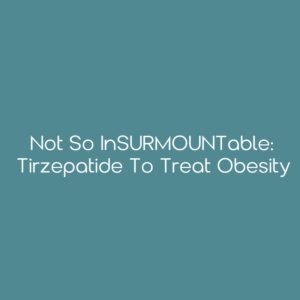First in Class? Rivaroxaban vs Apixaban
First in Class? Rivaroxaban vs Apixaban
This month we are dissecting an article from the Journal of the American Medical Association – Association of Rivaroxaban vs Apixaban With Major Ischemic or Hemorrhagic Events in Patients With Atrial Fibrillation.
While Direct Oral Anticoagulants (DOACs) such as apixaban and rivaroxaban are recommended for patients with atrial fibrillation, there hasn’t been evidence directly comparing them. Join us as we discuss their differences and guide your selection of a DOAC for minimized side effects and increased efficacy in your patients.
Upon successful completion of this application-based course, participants should be able to:
1. Describe key aspects of the Association of Rivaroxaban vs. Apixaban with Major Ischemic or Hemorrhagic Events in patients with Atrial Fibrillation Study
2. Compare rates of hemorrhagic events between patients from the Association of Rivaroxaban vs. Apixaban with Major Ischemic or Hemorrhagic Events in patients with Atrial Fibrillation study
3. Compare rates of ischemic events between patients from the Association of Rivaroxaban vs. Apixaban with Major Ischemic or Hemorrhagic Events in patients with Atrial Fibrillation study
4. Evaluate limitations discussed in the Association of Rivaroxaban vs. Apixaban with Major Ischemic or Hemorrhagic Events in patients with Atrial Fibrillation Study
5. Apply the findings from the Association of Rivaroxaban vs. Apixaban with Major Ischemic or Hemorrhagic Events in patients with Atrial Fibrillation study in providing care to patients with atrial fibrillation
Harriet Kusi, PharmD, BCPS
Clinical Pharmacist
MedStar Georgetown University Hospital
Harriet Kusi has no relevant financial relationships to disclose.
To obtain 1 contact hour of continuing pharmacy education credit (0.1 CEU), participants are to read the article cited below.
Ray WA, Chung CP, Stein CM, et al. Association of Rivaroxaban vs Apixaban With Major Ischemic or Hemorrhagic Events in Patients With Atrial Fibrillation. JAMA. 2021;326(23):2395–2404. doi:10.1001/jama.2021.21222
*CEimpact provides you with two (2) opportunities to complete the exam. If there are two failed attempts, the participant will not receive CPE credit.
Course fee includes course, course materials, and CPE credit submission to CPE Monitor.
Course is non-refundable.
Initial Release Date: May 12, 2025
Planned Expiration Date: May 12, 2028
Copyright 2025, CEimpact. All Rights Reserved. Any reproduction of this course without express permission is strictly forbidden.
![]() CEImpact is accredited by the Accreditation Council for Pharmacy Education as a provider of continuing pharmacy education. Obtain CPE credit by completing the course, followed by the exam and evaluation (if applicable). Once successfully completed, your course will appear in your Completed Courses tab. Access your CPE statement of credit at www.MyCPEMonitor.net.
CEImpact is accredited by the Accreditation Council for Pharmacy Education as a provider of continuing pharmacy education. Obtain CPE credit by completing the course, followed by the exam and evaluation (if applicable). Once successfully completed, your course will appear in your Completed Courses tab. Access your CPE statement of credit at www.MyCPEMonitor.net.
¹CEImpact provides you with two (2) opportunities to complete the exam. The learner will not receive CPE credit after two failed attempts.
Additional information
| Duration | 1h 0m |
|---|---|
| Topic Designator | Disease State/Drug Therapy |
| ACPE | Yes |
| ACPE Topic | 01 Drug Therapy |
| Role | Pharmacist |
| Media-Type | On-Demand |
| Release Date | 5/12/25 |
| CEUs | 0.1 |
| Rating | 4 |
| ACPE Number | 0107-0000-25-064-H01-P |



![Biosimilar Basics [Pharmacist]](https://www.ceimpact.com/wp-content/uploads/course-images-solidbg/2022/10/pharmacist/4838-300x300.jpg)
